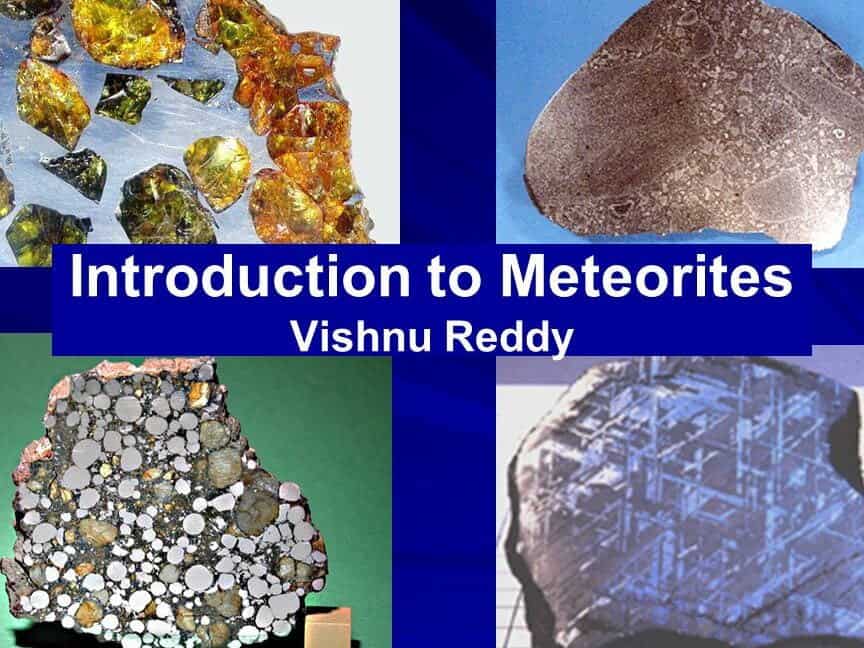A meteorite is a solid object that originates from outer space and survives its passage through the Earth’s atmosphere to reach the surface. These extraterrestrial rocks are made up of various materials, including metals, minerals, and organic compounds.
Meteorites are formed from asteroids, which are small rocky bodies that orbit the Sun. When an asteroid collides with another object in space, such as another asteroid or a planet, fragments can be ejected into space. These fragments, known as meteoroids, can then travel through the solar system until they encounter the Earth’s atmosphere.
As a meteoroid enters the Earth’s atmosphere, it experiences intense heat and pressure, causing it to heat up and vaporize. This process creates a bright streak of light in the sky, known as a meteor or shooting star. Most meteors burn up completely before reaching the Earth’s surface.
However, some meteoroids are large enough and have a composition that allows them to survive the journey through the atmosphere. These meteoroids, now called meteorites, can land on the Earth’s surface and be found by humans. They can range in size from tiny grains to large boulders.
Studying meteorites provides scientists with valuable information about the early solar system and the processes that have shaped our planet. They can contain clues about the formation of planets, the composition of asteroids, and even the origins of life on Earth.
Overall, meteorites are fascinating objects that offer a glimpse into the mysteries of the universe. By studying them, scientists can continue to unravel the story of our cosmic origins.
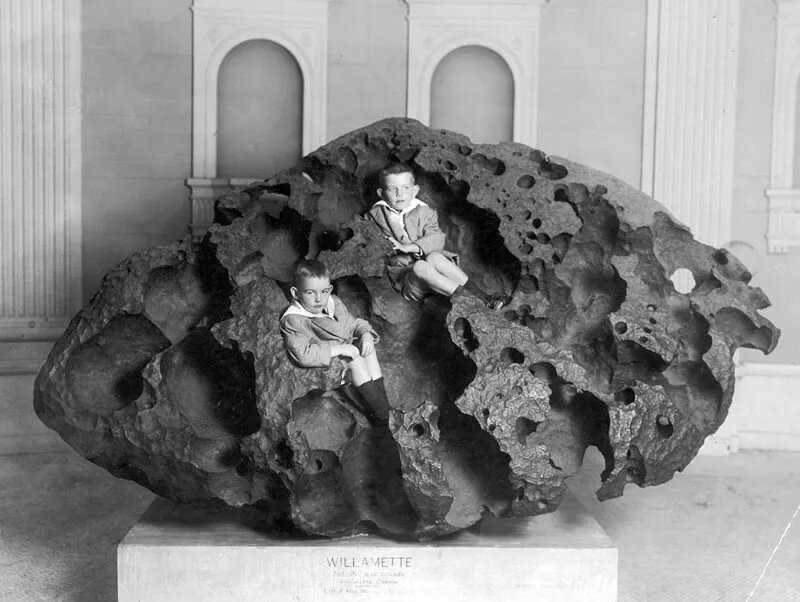
The term “star metal” is used in numerous ancient languages to refer to iron. Examination of archaeological discoveries, as well as myths, stories, and legends, indicates that meteoric iron was the first type of iron that humans encountered.
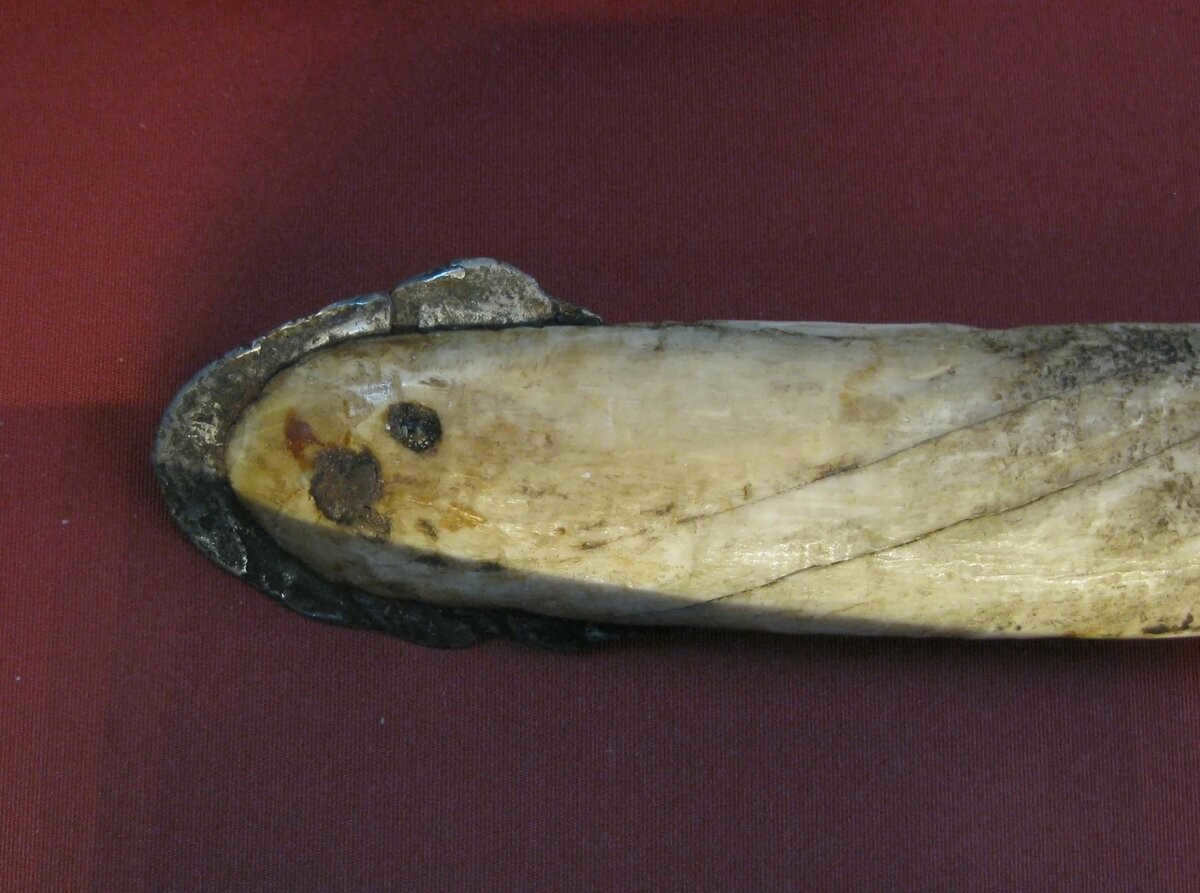

Ancient walrus tusk harpoon with a blade made of meteoric iron
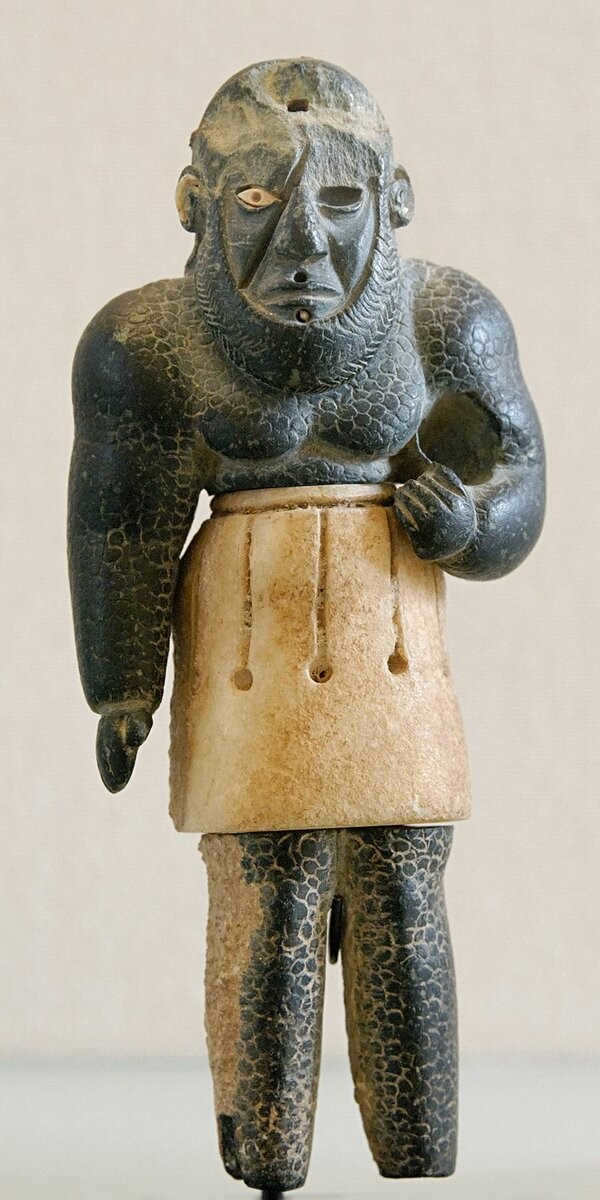
Ancient meteorites are known to have been used to create unique and valuable objects, such as a statuette made of meteoric iron.
The rarity and significance of meteoric iron can be seen in the burial chamber of the Egyptian pharaoh Tutankhamun, where thousands of gold objects were discovered, but only one dagger made from meteoric iron.
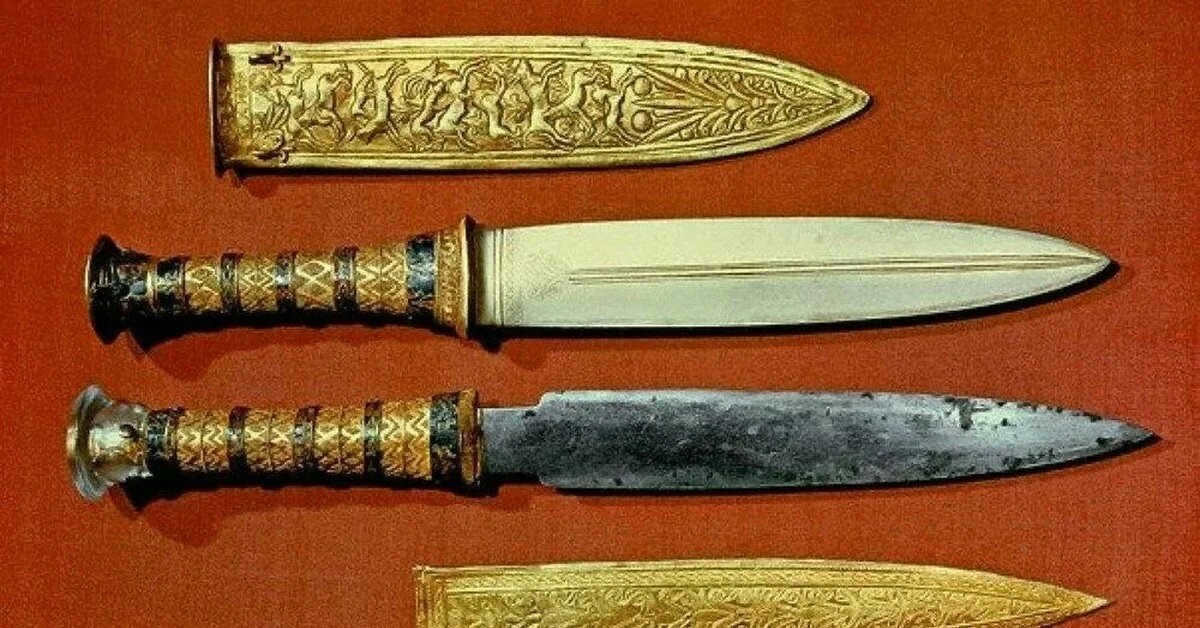
One interesting find in Tutankhamun’s tomb is a dagger made from meteoric iron.
It is worth noting that meteoritic iron is known for its high purity, surpassing the quality of iron obtained by our ancient ancestors from ore.
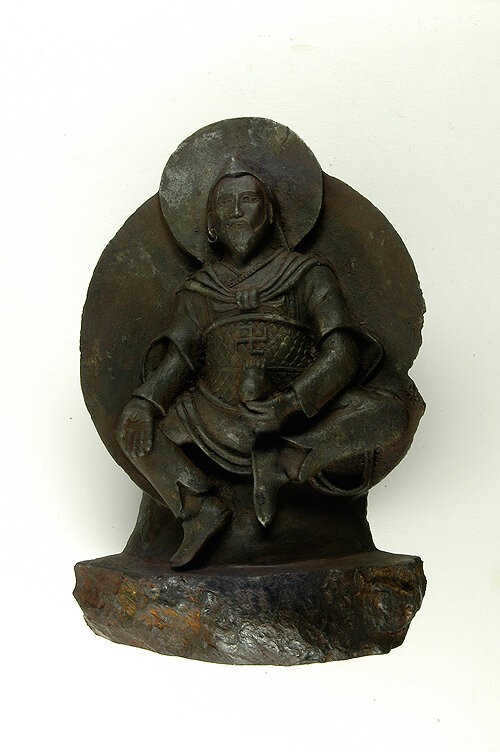
A Tibetan sculpture of the Buddhist deity Vaishravan, measuring 24 cm in height and weighing 10.6 kg, was crafted in the 11th century. It was made from a fragment of an iron meteorite that had fallen to Earth approximately 15,000 years ago.
The Willamette Meteorite
The Willamette Meteorite, a colossal iron meteorite weighing over 15 tons, was discovered by the Clackamas, an American Indian tribe from Oregon. They held this meteorite in high reverence and referred to it as “Tomanovos” in their language, which translates to “Moon Guest”. They believed that the rainwater collected in the hollows of the meteorite possessed healing and magical properties. Eventually, the meteorite was transported to the American Museum of Natural History in New York.
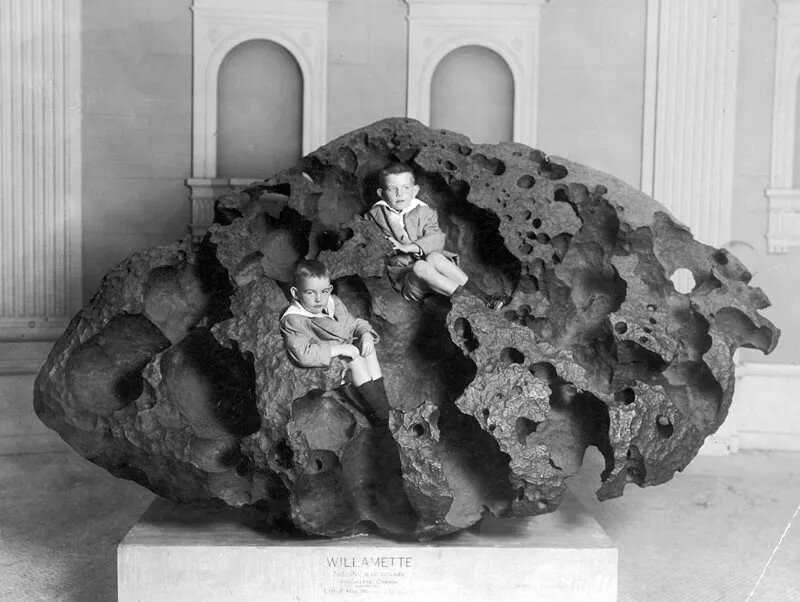
Sikhote-Alin meteorite
On the 12th of February, 1947, a meteorite descended upon the Sikhote-Alin Mountains located in the remote eastern region of Russia. To be more precise, the meteorite disintegrated into fragments at a considerable altitude, resulting in a veritable “shower of iron” descending towards the earth’s surface. Scientists were able to retrieve over 3,000 iron fragments with a combined weight exceeding 25 tons, with the heaviest fragment weighing nearly 2 tons! Numerous fragments of this meteorite still remain undiscovered – experts estimate that the total weight of the “iron shower” ranged from 60 to 100 tons!
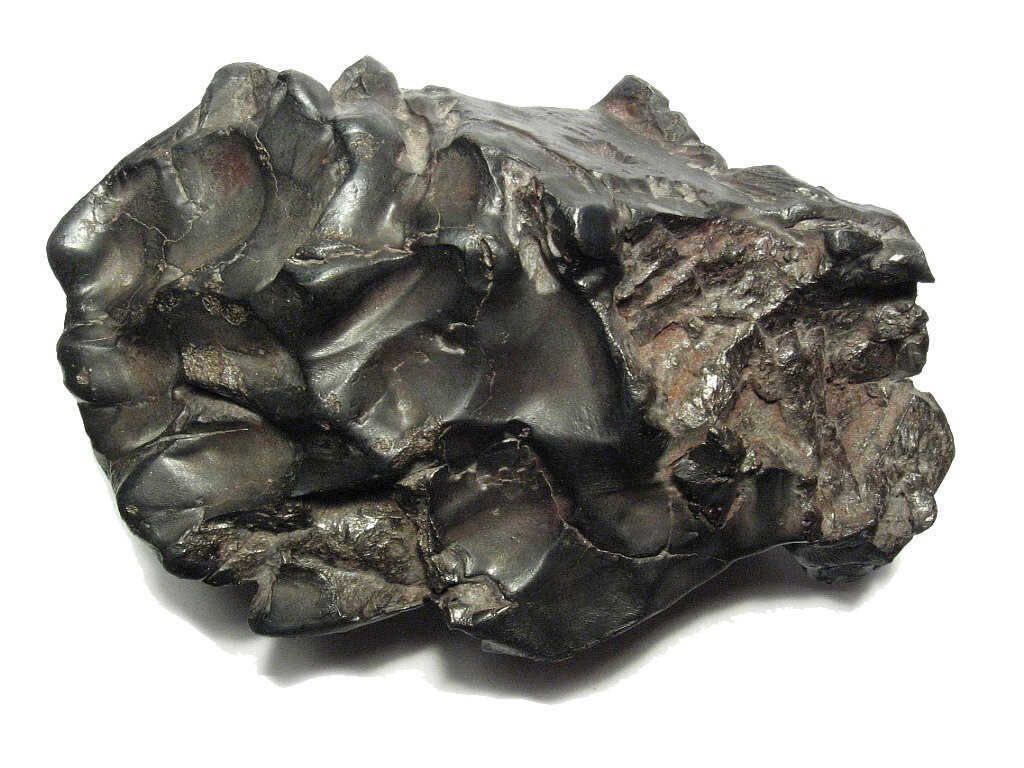

A piece of the Sikhote-Alin meteorite
The Toluca meteorite.
Over 10,000 years ago, a shower of iron fell in the area where the city of Hikipilco now stands, near Toluca (Mexico). The local indigenous people actively searched for fragments of this meteorite and used them to create various tools and weapons. The Spanish conquistadors took notice of the unusual fragments of “celestial iron” in 1776. Scientists estimate that the total mass of the meteorite fragments is 3 tons.
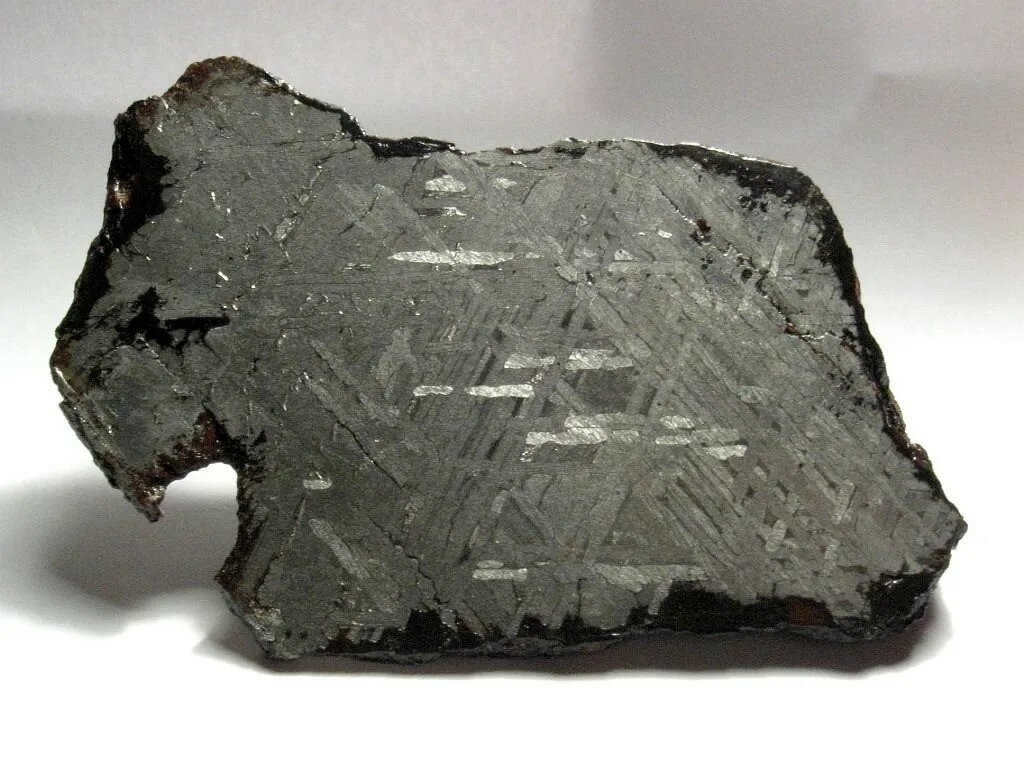

The Goba meteorite
Discovered in 1920 while plowing a field at Goba West Farm, the Goba meteorite is the largest meteorite ever found by humans and the largest naturally occurring iron ingot. Astronomers estimate that it fell to Earth around 80,000 years ago in Namibia, Africa. Weighing approximately 60 tons, this massive piece of iron continues to amaze scientists.
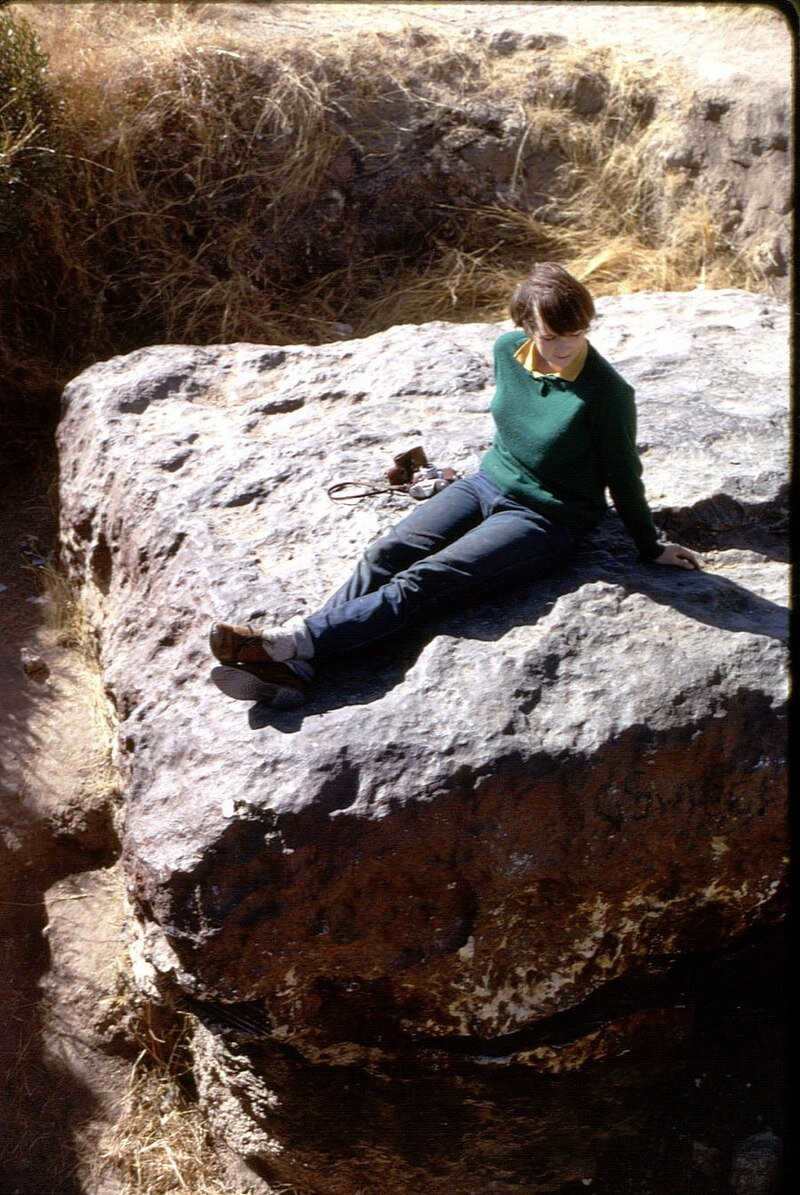
Pallas’ iron
This is the initial discovery of an iron-stone meteorite known as a pallasite made by scientists. The mass of this extraterrestrial rock is more than 700 kilograms, and it was unearthed in 1749 in Russia, approximately two hundred kilometers away from Krasnoyarsk. The extraordinary specimen was stumbled upon by a local blacksmith. It remained undisturbed at its original location for over 20 years until it was examined by academician Peter Pallas in 1772, who was conducting an expedition in the area. Upon his request, the “stone” was transported to St. Petersburg and placed in the Kunstkamera.
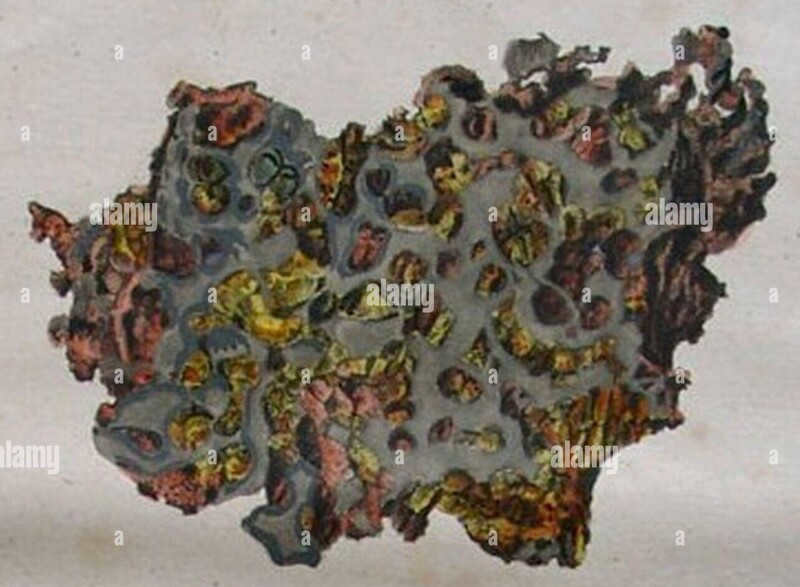
Imilak meteorite
Discovered in 1822 in the Atacama Desert, Chile, the Imilak meteorite is considered to be one of the most exquisite meteorites ever found. This extraordinary meteorite falls into the pallasite class, characterized by the fusion of large olivine crystals into an iron “skeleton” that features beautiful amber-yellow “windows” within its iron “wall.” With a total weight estimated at approximately 1 ton, fragments of the Imilak meteorite are highly sought after by collectors for their exceptional beauty and rarity.
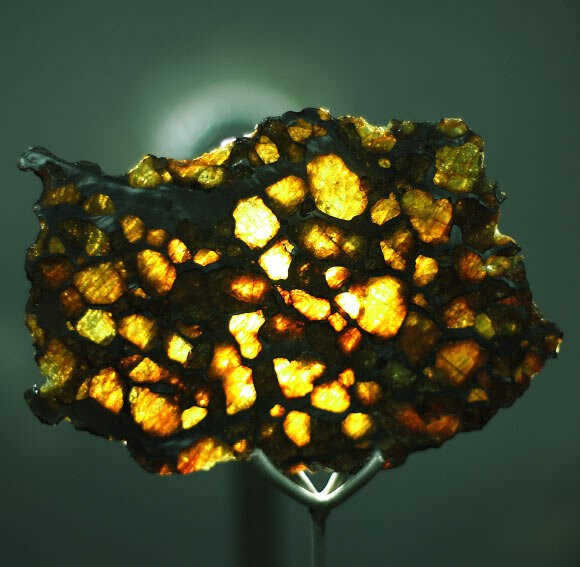
Peekskill meteorite
This meteorite serves as a vivid example of the old adage “anything can happen in this world”. On the fateful day of October 9, 1992, Michelle Knapp, a young girl, was peacefully enjoying a cup of tea in her room when she was startled by a tremendous crash coming from the street. To her astonishment, she discovered that her beloved Chevrolet Malibu car had collided with a genuine meteorite weighing nearly 13 kilograms! This extraordinary event was witnessed by a large crowd. Sadly, the car was completely destroyed, but it also became a one-of-a-kind scientific exhibit. Michelle managed to sell the meteorite itself for a hefty sum of $50,000, which was more than enough to buy a new car.
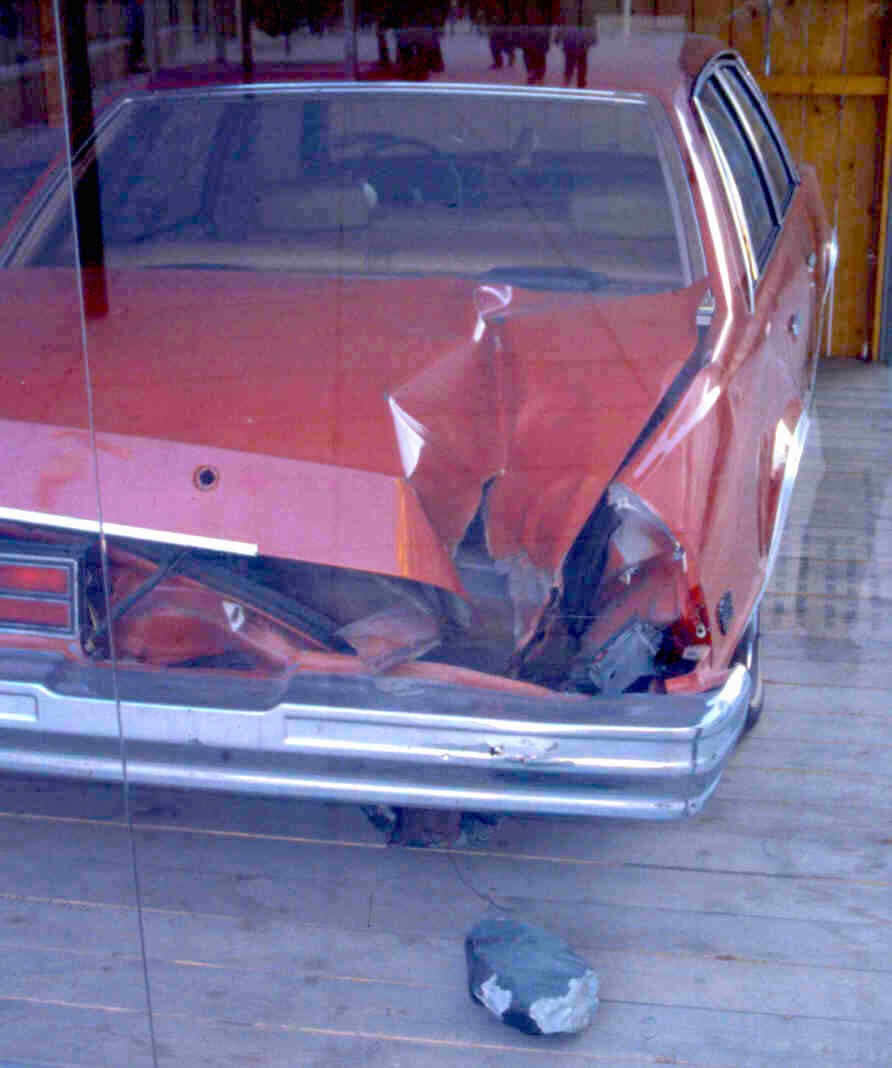
The Chelyabinsk Meteorite
One of the most remarkable meteorites to fall in recent history is the Chelyabinsk meteorite, which landed on February 15, 2013. This particular meteorite stands out because it was the first time that a meteorite fall was captured on video, with thousands of CCTV cameras and car recorders capturing the event. This extensive footage allowed scientists to accurately calculate the trajectory of the meteorite. When the meteorite exploded at an altitude of over 20 kilometers, it created a shockwave that shattered windows in numerous houses. Fortunately, there were no fatalities, although around a hundred people sustained injuries from shattered glass.
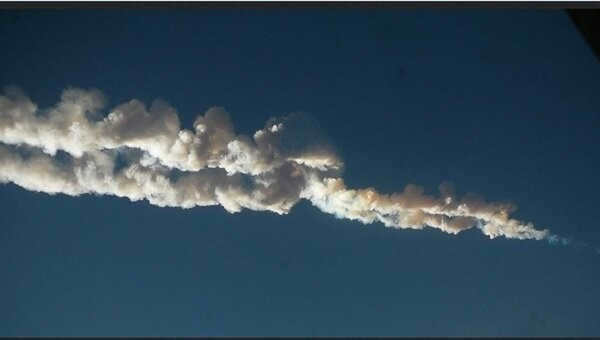
The descent of the Chelyabinsk meteorite
Scientists have managed to retrieve the heaviest piece of this meteorite, weighing 570 kilograms, from the depths of Lake Chebarkul. The overall weight of the Chelyabinsk meteorite is estimated to be around 11 thousand tons.
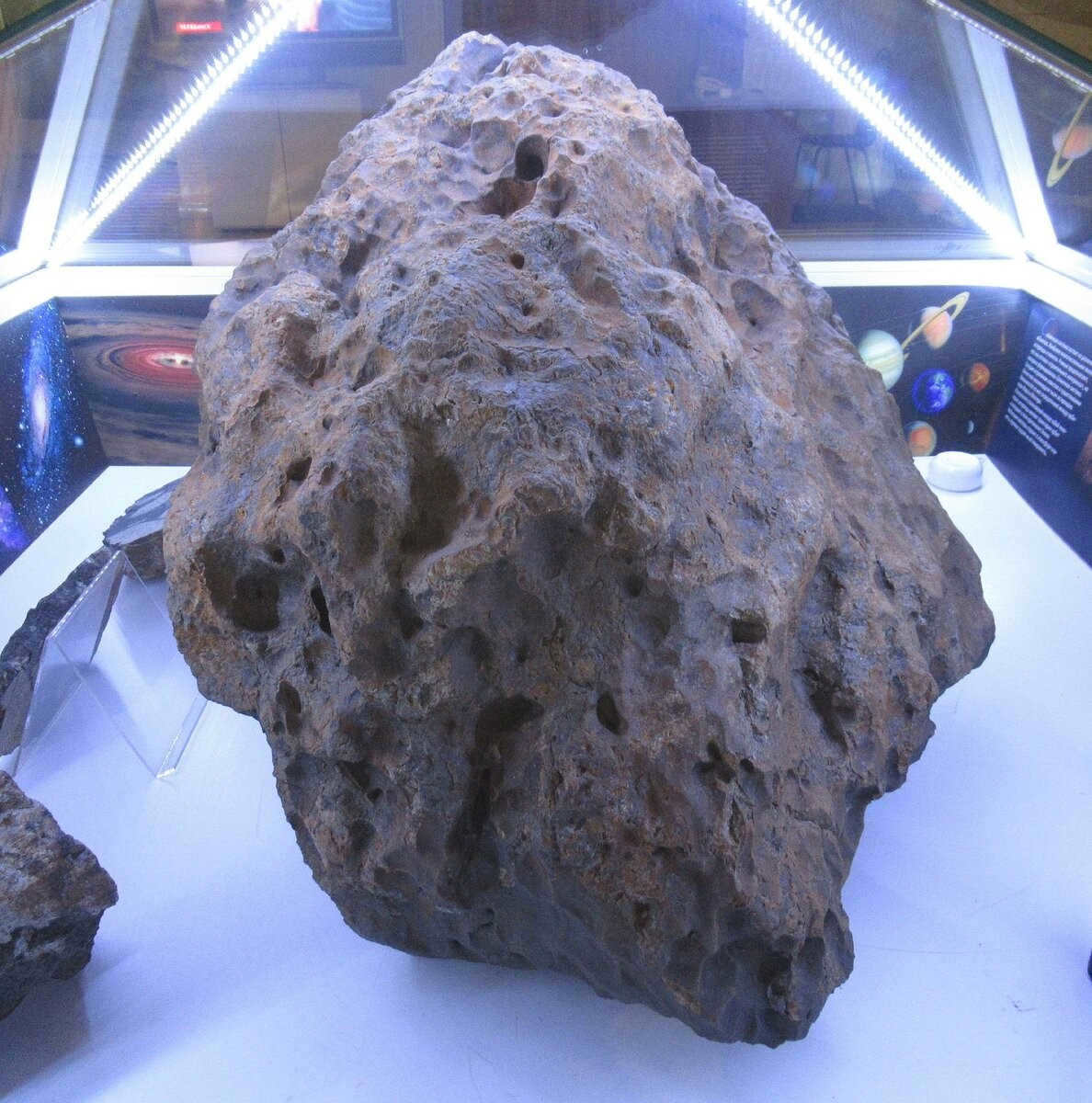
Part of the Chelyabinsk meteorite
4 or 5: How many oceans are there on Earth?
Who constructed star fortresses all around the globe?
13 exceptionally uncommon foods that only a few individuals have ever had the opportunity to see on their plate
13 comments
Imagine possessing a blade that was once just a formless chunk of metal and has journeyed through the vast expanse of space for countless millennia, passing by unknown celestial wonders in the cosmos.
Tunguska: the most powerful and enigmatic event.
On the morning of June 17, 1908, a celestial object streaked across the sky above the Podkamennaya Tunguska River. It detonated over the Siberian taiga at an altitude of 7-10 kilometers. The resulting shockwave traveled around the Earth twice. The explosion, with an estimated power of 40 megatons (equivalent to that of a thermonuclear bomb), flattened trees over an area of more than 2,000 square kilometers. A strong magnetic storm persisted for five hours, and the sky glowed for several days following the cataclysm.
Subsequently, the speed of the celestial body’s trajectory was calculated to be 10 kilometers per second, but experts have yet to reach a consensus on its mass. Proposed values range from 100,000 to one million tons.
And to this day, the Tunguska event remains an unsolved mystery.
There are numerous theories regarding what transpired above the remote taiga near the Podkamennaya Tunguska River. These include the crash of an extraterrestrial spacecraft, the explosion of a colossal ball of lightning, a collision between Earth and a black hole or cloud of cosmic dust, a laser signal sent to us from the 61 Swan planetary system, and the aftermath of Nikola Tesla’s experiments in wireless power transmission.
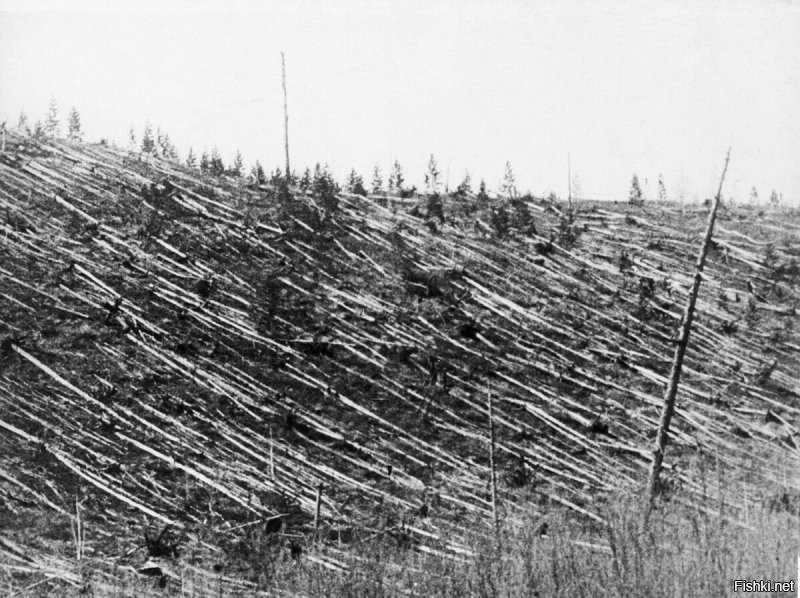
"The shockwave traveled around the world twice." What do you think about that? The shockwave dispersed in various directions, and if the energy was sufficient to complete two full rotations around the globe, the wave should have intersected itself at the exact opposite point on the planet and dissipated. Additionally, the force generated by a thermonuclear bomb does not typically produce a shockwave of such intensity, even at an altitude of 10km.
I’m a bit perplexed by this. Is there anyone knowledgeable in physics present?
A meteorite is a celestial object of natural origin that falls on the surface of a planet and measures at least 2 mm in size. Micrometeorites, on the other hand, refer to bodies that have landed on the planet’s surface and range in size from 10 microns to 2 mm. The smallest particles are known as space dust. Meteorites vary in composition and structure, which provide valuable insights into their origins and contribute to our understanding of the solar system’s evolution.
Classification of meteorites based on their chemical composition and structure
Meteorites are primarily made up of mineral and metallic components in varying proportions. The mineral portion consists of iron and magnesium silicates, while the metallic portion is composed of iron nickel. Some meteorites also contain impurities that play a significant role in determining certain characteristics and providing information about their origin.
How are meteorites categorized based on their chemical composition? Traditionally, there are three main groups:
- Iron meteorites, which predominantly consist of nickel-iron alloys.
- Iron-stone meteorites, which have an intermediate structure.
- Stone meteorites, which are primarily composed of silicate materials. Within this group, there are chondrites and achondrites, which have distinct structural differences. Chondrites are characterized by the presence of inclusions called chondrules within the mineral matrix.
Furthermore, apart from considering the chemical composition of meteorites, there is also a classification based on the structural characteristics of “celestial rocks,” which can be divided into two major groups:
- differentiated, consisting solely of chondrites;
- undifferentiated, a vast group encompassing all other varieties of meteorites.
Chondrites are the defining characteristic of meteorites of this variety. They predominantly consist of silicate formations that are either elliptical or spherical in shape and measure approximately 1 mm in diameter. The elemental makeup of chondrites closely mirrors that of the Sun, with the exception of the most volatile and lightweight elements, namely hydrogen and helium. By considering this information, researchers have deduced that chondrites originated during the early stages of the solar system’s formation, directly from the protoplanetary cloud.
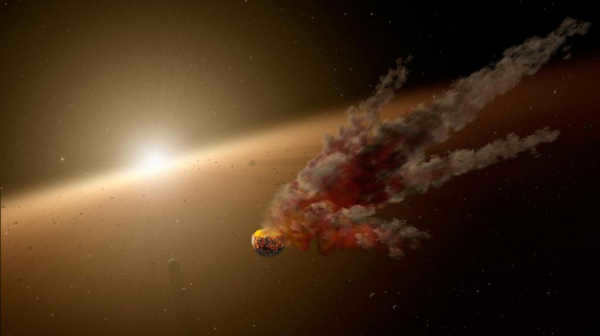
These meteorites were not once part of large celestial bodies that had already experienced magmatic differentiation. Chondrites were created through the condensation and accumulation of protoplanetary matter under certain thermal conditions. The chondritic material is relatively dense, ranging from 2.0 to 3.7 g/cm3, but also fragile: a meteorite can easily be crushed by hand.
Let’s examine the composition of these types of meteorites more closely, as they are the most common (85.7%) of all.
Carbonaceous chondrites: A Unique Type of Meteorite
Carbonaceous chondrites, also known as C-chondrites, stand out from other meteorites due to their high iron content in silicates. The dark hue of these meteorites is a result of the presence of magnetite, as well as impurities like graphite, soot, and organic compounds. Furthermore, carbonaceous chondrites contain water that is bound within hydrous silicates such as chlorite and serpentine.
C-chondrites can be divided into different groups based on various characteristics. One particular group, known as CI chondrites, is of great interest to scientists. What sets these meteorites apart is the fact that they lack chondrules, small spherical grains typically found in other meteorites. It is believed that the material of CI chondrites has remained unchanged by heat, making them the oldest known objects in our solar system.
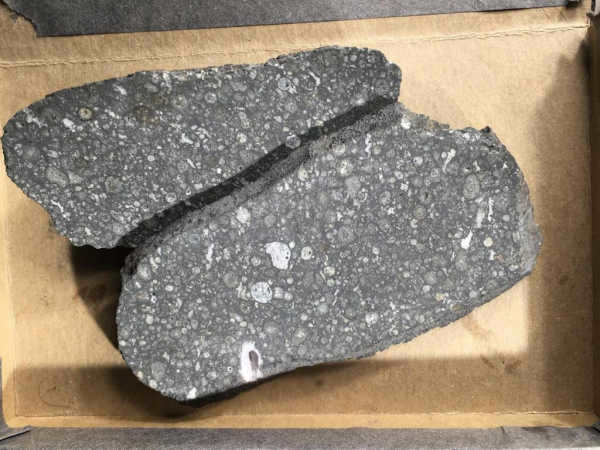
Organic Matter Found in Meteorites
Carbonaceous chondrites have been found to contain various organic compounds, including aromatic and saturated hydrocarbons, carboxylic acids, nitrogenous bases (which are part of nucleic acids in living organisms), and porphyrins. These compounds are preserved in the meteorites due to the formation of a fusion crust, which acts as an effective heat insulator despite the high temperatures experienced during atmospheric entry.
The presence of these substances suggests that they are likely of abiogenic origin and provide evidence for the processes of primary organic synthesis occurring within the protoplanetary cloud. Given the age of carbonaceous chondrites, this indicates that the early Earth already possessed the necessary building blocks for the emergence of life.
Ordinary and enstatite chondrites
Ordinary chondrites, as their name suggests, are the most common type of chondrites. These meteorites contain silicates, nickel iron, and show evidence of thermal metamorphism at temperatures ranging from 400-950 °C and shock pressures up to 1000 atmospheres. The chondrules found in these meteorites are often irregularly shaped and can contain debris. An example of an ordinary chondrite is the Chelyabinsk meteorite.
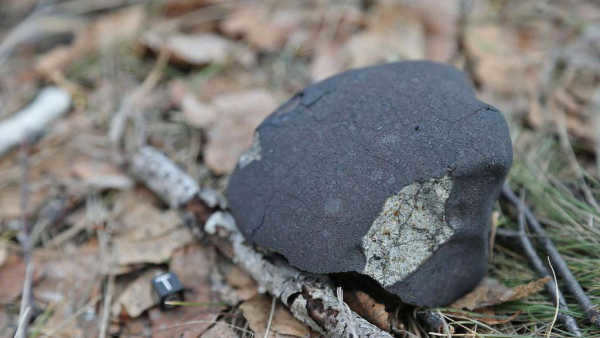
Enstatite chondrites are distinguished by their predominance of metallic iron and a silicate component rich in magnesium (in the form of enstatite mineral). These meteorites contain fewer volatile compounds compared to other chondrites. They have experienced thermal metamorphism at temperatures ranging from 600-1000 °C.
Meteorites from both of these groups are often fragments of asteroids, meaning they originated from small protoplanetary bodies that did not undergo subsurface differentiation processes.
Varieties of Meteorites with Different Chemical Composition
Now, let’s explore the various categories of meteorites within this extensive group that are characterized by their unique chemical compositions.
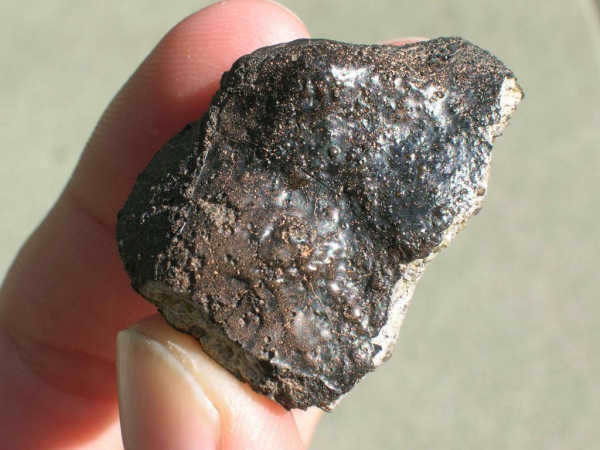
Firstly, there are stone achondrites, secondly, ironstones, and thirdly, iron meteorites. What unites them is that all members of the aforementioned categories are fragments of immense objects with asteroidal or planetary dimensions, within which there was a process of material differentiation.
Within the differentiated meteorites, there are both fragments from asteroids as well as bodies expelled from the surface of the Moon or Mars.
Characteristics of distinct meteorites
Achondrite is a type of silicate meteorite that lacks significant inclusions and has a low metal content. It shares a similar composition and structure with basalts found on Earth and the Moon. The HED group of meteorites is particularly intriguing, as they are believed to have originated from the mantle of Vesta, a presumed surviving protoplanet of the Earth group. These meteorites bear resemblance to ultramafic rocks found in the upper mantle of Earth.
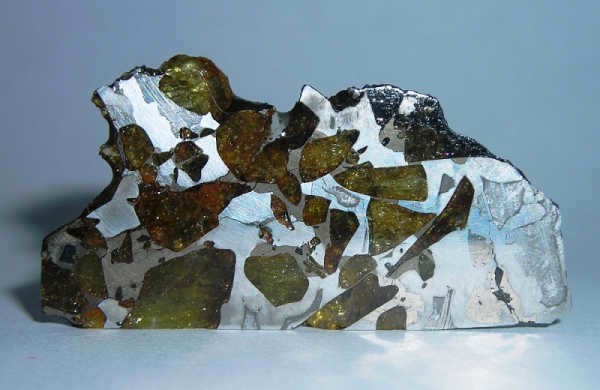
Iron stone meteorites, such as pallasites and mesosiderites, are distinguished by the presence of silicate inclusions within an iron-nickel matrix. Pallasites were named after the renowned Pallas iron, which was discovered in the 18th century near Krasnoyarsk.
Most iron meteorites possess a fascinating structure known as “Widmanstetten figures,” which are formed from nickelized iron with varying amounts of nickel. This structure is created through the slow crystallization of iron-nickel under specific conditions.
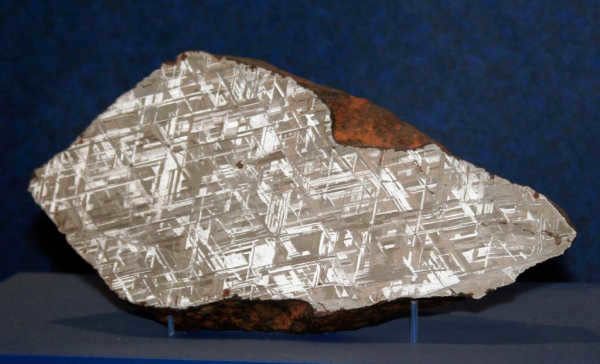
Origin of “Celestial Stones”
The substance known as chondrites can be traced back to the early stages of the Solar System’s formation, when pre-planetary matter began to accumulate and planetesimals, which would later become planets, started to form. By using radioisotope dating, scientists have determined that chondrites are over 4.5 billion years old.
Differentiated meteorites, on the other hand, provide insights into the formation of planetary bodies. These meteorites exhibit clear signs of melting and recrystallization, indicating that they were formed in different regions of a parent body that underwent either partial or complete destruction. The specific chemical composition and structure of each meteorite depend on these factors, and they are used as the basis for classification.
Distinct celestial bodies also hold data regarding the series of events that occurred within the parent entities. An example of this is ironstone meteorites, which reveal the incomplete segregation of lightweight silicates and dense metallic elements from the protoplanet’s distant past.
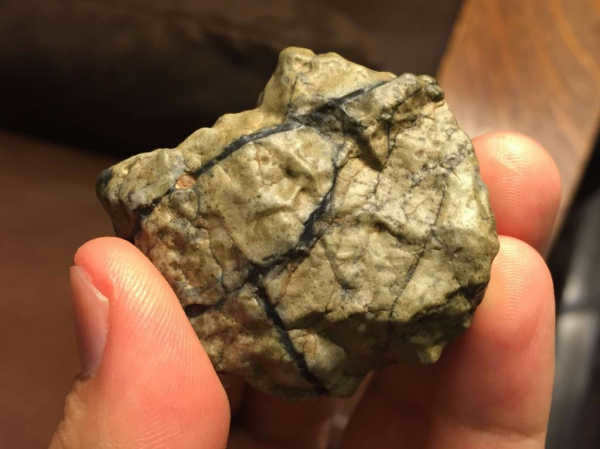
When asteroids of different types and ages collide and break apart, they can accumulate mixed fragments of different origins in their surface layers. Then, in another collision, a similar “composite” fragment could be ejected from the surface. The Kaidong meteorite is an example of this, as it contains particles from various types of chondrites and metallic iron. This means that the history of meteoritic matter is often intricate and perplexing.
There is currently a great deal of focus on studying asteroids and planets through automatic interplanetary missions. Undoubtedly, this will lead to new discoveries and a greater understanding of the origin and evolution of meteorites, which serve as witnesses to the history of the solar system, including our own planet.
Other relevant information:
Discover the various types of meteorites: a detailed classification with accompanying pictures, including iron, stony, and stony-iron meteorites, as well as meteorites from the Moon and Mars, and those found in the asteroid belt.
When most people think of a meteorite, they often envision one made of iron. This is not surprising, as iron meteorites are incredibly dense, heavy, and often exhibit unique and impressive shapes upon impact and fusion with Earth’s atmosphere. However, iron meteorites are just one of the three primary categories of meteorites, and they are relatively uncommon in comparison to stony meteorites, particularly the most prevalent subset known as ordinary chondrites.
There exists a vast array of meteorite classifications categorized into three primary groups: iron, stony, stony-iron. Nearly all meteorites possess extraterrestrial iron and nickel. It is extremely uncommon to come across meteorites that lack any trace of iron, to the extent that even if we were to seek assistance in identifying potential celestial rocks, it is highly improbable that we would encounter any devoid of substantial quantities of this metal. The classification of meteorites is fundamentally determined by the quantity of iron present within the specimen.
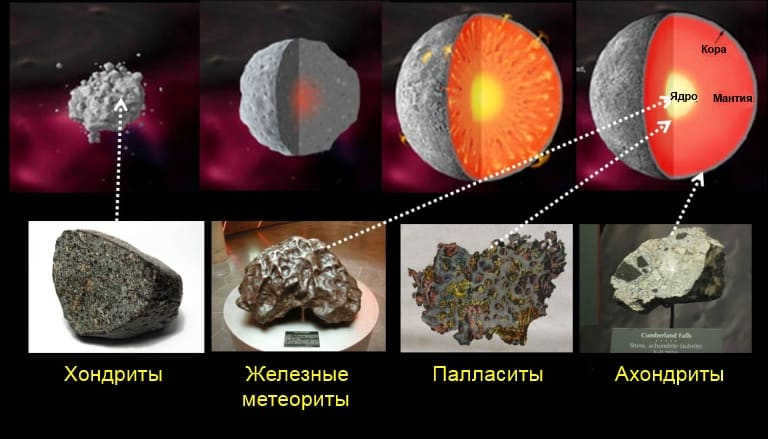
Meteorite of the Iron Type
Meteorites made of iron were fragments from the core of a celestial body that no longer exists, such as a planet or a large asteroid. It is believed that these meteorites were formed in the region known as the Asteroid Belt, which lies between the planets Mars and Jupiter. Iron meteorites are the densest substances found on Earth and exhibit a strong magnetic attraction. They are significantly heavier than most rocks found on our planet, as anyone who has tried to lift a cannonball or a slab of iron or steel can attest.
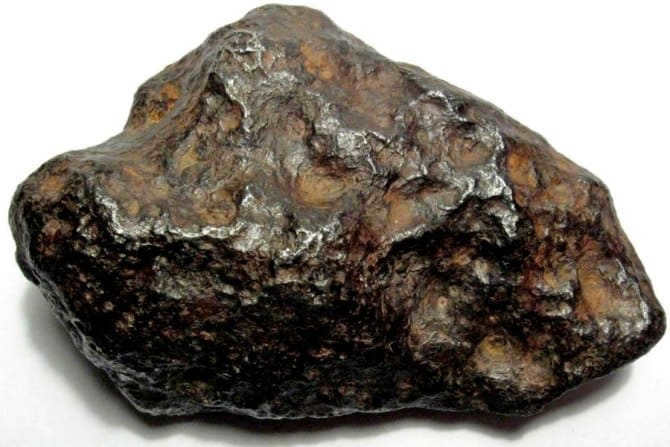
This is an illustration of a meteorite made primarily of iron.
Within this group, the iron component typically makes up about 90% to 95%, while the remaining portion consists of nickel and various other trace elements. Iron meteorites are classified into different groups based on their chemical composition and structure. The structural classification is determined by analyzing two components of iron-nickel alloys known as kamasite and tenite.
The Widmanstetten structure, which is named after Count Alois von Widmanstetten, who first described it in the 19th century, gives these alloys their unique crystal structure. When an iron meteorite is cut into plates, polished, and etched with a weak solution of nitric acid, the lattice-like structure becomes visible, showcasing its beauty. During this process, kamasite crystals are examined, and the average width of the bands is measured. This measurement is then used to classify iron meteorites into different structural classes. Iron meteorites with thin bands (less than 1 mm) are referred to as “fine-structured octahedrite,” while those with wide bands are known as “coarse octahedrite.”
The most abundant type of meteorites are stone meteorites. These meteorites are formed from the outer layer of a planet or asteroid. Some stone meteorites, especially those that have been exposed to Earth’s surface for a long time, closely resemble regular rocks, making them difficult to identify without expertise. On the other hand, freshly fallen meteorites have a distinctive black, glossy surface caused by the intense heat experienced during their atmospheric entry. Additionally, the majority of these rocks contain enough iron to be attracted to a strong magnet.
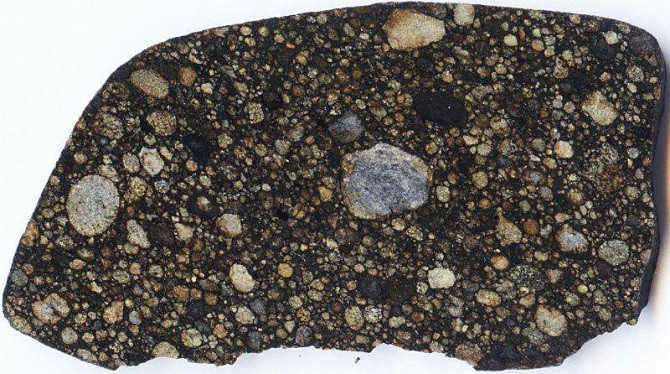
A classic example of chondrites
Several stone meteorites possess minute, vivid, grain-like inclusions referred to as “chondrites.” These small grains originated from the solar nebula, predating the formation of our planet and the entire Solar System, making them the earliest known material available for research. Stone meteorites that contain these chondrules are known as “chondrites.”
Achondrites, also known as space rocks lacking chondrules, are volcanic formations resulting from volcanic processes on their celestial bodies. These formations have undergone melting and recrystallization, effectively eradicating any remnants of ancient chondrites. Due to their minimal or nonexistent iron content, achondrites pose a challenge to detect compared to other meteorites. However, their specimens often feature a glossy crust resembling enamel paint.
A unique perspective on meteorites from the Moon and Mars
Is it possible to discover lunar and Martian rocks right here on Earth? The answer is affirmative, although they are exceedingly scarce. To date, scientists have unearthed over one hundred thousand lunar meteorites and approximately thirty Martian meteorites, all of which fall into the achondrite category.
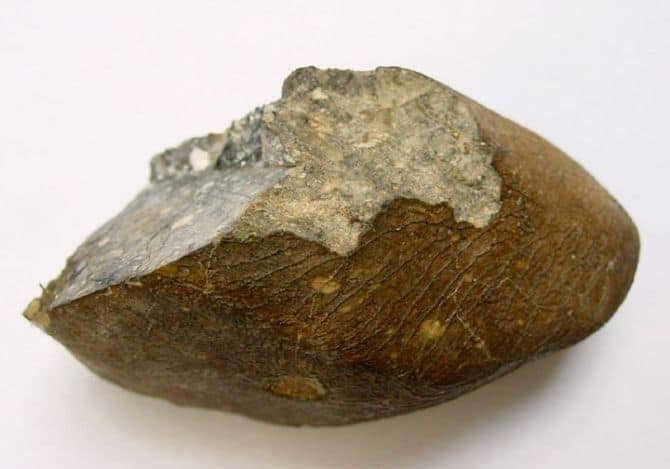
The impact of meteorites with the surfaces of the Moon and Mars resulted in the ejection of fragments into space, with some of them eventually falling to Earth. In terms of value, lunar and Martian specimens rank among the most costly meteorites. In the collectors’ market, their price can soar up to one thousand dollars per gram, surpassing the value of gold by several times.
Stone-iron type of meteorite
The stony-iron meteorite, which is the rarest of the three main types, constitutes less than 2% of all known meteorites. These meteorites are made up of approximately equal proportions of iron-nickel and stone, and can be classified into two categories: pallasites and mesosiderites. Stone-iron meteorites originated at the boundary between the crust and mantle of their parent bodies.
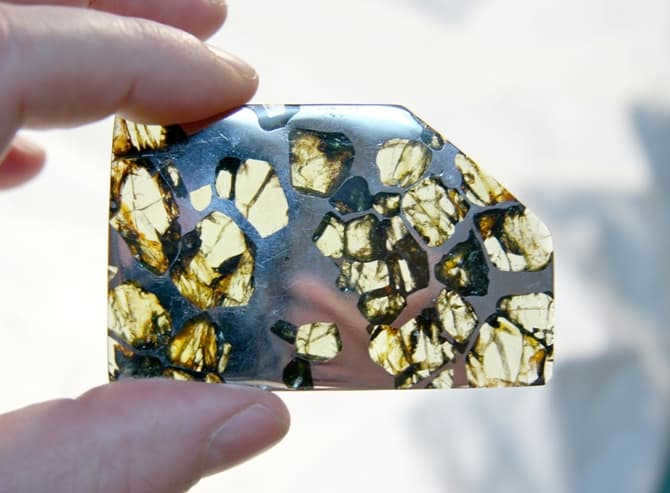
Illustration of a meteorite composed of rock and iron
Pallasites are highly fascinating meteorites and are incredibly captivating to private collectors. Pallasites are composed of a matrix of iron and nickel that is interspersed with crystals of olivine. When the olivine crystals are exceptionally pure and exhibit a vibrant emerald green color, they are referred to as peridot gemstones. Pallasites were named after the German zoologist Peter Pallas, who first described the Russian meteorite Krasnoyarsk, which was discovered near the Siberian capital in the 18th century. When a pallasite crystal is sliced into plates and polished, it becomes translucent, giving it a celestial beauty.
Types of Meteorite Classification
The classification of meteorites is a multifaceted and intricate field of study, and the provided information serves as a concise introduction to the subject. Over the past few years, the methods of classification have undergone multiple revisions, leading to the reclassification of certain known meteorites into alternative categories.
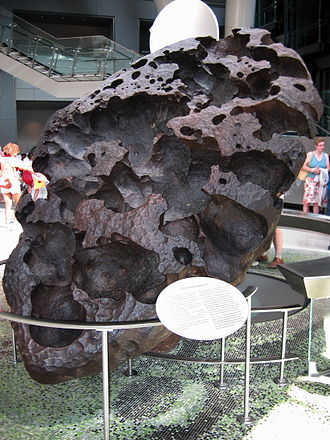
Meteorites are celestial bodies that originate from space and have landed on the surface of a large celestial object.
The majority of discovered meteorites range in weight from a few grams to a few kilograms. The largest meteorite ever discovered is Goba, which is estimated to have weighed around 60 tons [1]. It is believed that approximately 5-6 tons of meteorites fall to Earth daily, totaling to about 2 thousand tons per year [2].
The leading academics of the 18th century did not acknowledge the existence of meteorites [3], and theories suggesting an extraterrestrial origin were considered to be pseudo-scientific. It is said that in 1790, the Paris Academy of Sciences made a decision to disregard reports of rocks falling to Earth, deeming it an impossible phenomenon. In order to prevent museums from being ridiculed, many collections removed meteorites (referred to as aerolites at the time) [2] [4]. [2] [4].
Meteorites were the subject of study for academics such as V. I. Vernadsky, A. E. Fersman, as well as passionate meteorite researchers like P. L. Dravert and L. A. Kulik, among many others. The Russian Academy of Sciences currently has a dedicated committee responsible for the collection, study, and preservation of meteorites. This committee houses a vast collection of meteorites.
Terminology
A celestial object before it enters the Earth’s atmosphere is referred to as a meteoric object and is categorized based on its astronomical characteristics. It can be space particles, a small celestial body, a larger celestial body, fragments of these bodies, or other meteoric objects. An object that travels through the Earth’s atmosphere and creates a luminous trail, whether it passes through the upper atmosphere and returns to outer space, disintegrates in the atmosphere, or impacts the Earth’s surface, can be referred to as either a meteor or a bolide. Meteors are objects that are not brighter than the 4th magnitude, while bolides are objects that are brighter than the 4th magnitude or have distinguishable angular sizes.
A solid object of extraterrestrial origin that lands on the Earth’s surface is known as a meteorite.
There are various terms used to describe meteorites, such as aerolites, siderolites, uranolites, meteorolites, betiliams (baituloi), celestial, airborne, atmospheric, or meteor rocks, among others.
When similar events occur on other planets and celestial bodies, they are commonly referred to as collisions between celestial bodies.
The process of meteoroid impact on Earth
When a meteoroid enters Earth’s atmosphere, it accelerates to speeds ranging from 11 to 72 km/s. [source not stated 699 days] As it moves through the atmosphere, it heats up and begins to glow. The intense heat causes the outer layers of the meteoroid to ablate, burning and blowing away particles of matter. This process can significantly reduce the mass of the meteoroid by the time it reaches the Earth’s surface.
For instance, a small meteoroid traveling at a speed of 25 km/s or more will burn up almost completely, leaving little to no residue. In these cases, only a few kilograms or even grams of matter will actually reach the surface, compared to the tens or hundreds of tons of initial mass. Throughout its descent, the meteoroid leaves traces of its combustion in the atmosphere, which can be observed along its entire trajectory.
| Loss of the horizontal component of velocity |
If a meteoroid does not burn up in the atmosphere, it loses its horizontal velocity as it slows down. This causes the trajectory of its descent to change from being mostly horizontal at the beginning to nearly vertical at the end. As the meteoroid decelerates, its brightness decreases and it cools (often indicating that the meteorite was warm rather than hot when it fell).
In addition, the meteoroid may fragment, resulting in a meteor shower.
“Proper” round (not elongated) meteorite footprints are explained by the explosive processes that occur during its high-speed descent.
Classification of meteorites
Classification by composition
- stony
- chondrites
- carbonaceous chondrites
- ordinary chondrites
- enstatite chondrites
- pallasites
- mesosiderites
Achondrites comprise 7.3% of meteorites of rock origin. These are pieces of protoplanetary (and possibly planetary) objects that have experienced a process of melting and differentiation, resulting in the formation of metallic and silicate components.
Iron meteorites are composed primarily of an alloy of iron and nickel. They make up 5.7% of meteorite falls.
Iron-silicate meteorites possess a composition that falls between that of rock and iron meteorites. They are relatively uncommon, accounting for only 1.5% of meteorite falls.
Differentiated meteorites like achondrites, iron, and iron-silicate meteorites are classified as such because they are believed to be composed of materials that have undergone differentiation within asteroids or other celestial bodies. It was previously believed that all differentiated meteorites were the result of the breakup of one or more large bodies, like the planet Phaeton. However, further analysis of the composition of different meteorites suggests that they are more likely formed from the remnants of multiple large asteroids.
In addition to this, there was previously the identification of tektites, which are fragments of siliceous glass formed through impacts. However, it was later discovered that tektites are actually formed when a meteorite collides with a silica-rich rock [5].
Classification based on detection method
- Falls (when a meteorite is discovered after witnessing its descent through the atmosphere);
- Discovery (when the meteoritic nature of the material is determined solely through analysis);
Presence of extraterrestrial organic compounds in meteorites
Carbonaceous meteorites have a notable characteristic – they possess a thin glassy crust that is believed to have formed due to high temperatures. This crust acts as an effective insulator, allowing for the preservation of minerals within the meteorites that are sensitive to extreme heat, such as gypsum. As a result, the study of the chemical composition of carbonaceous meteorites has provided insights into the presence of organic compounds with biogenic origins in these meteorites:
While the existence of such compounds does not definitively prove the presence of extraterrestrial life, it does suggest the possibility, as these substances could potentially be synthesized abiotically under specific conditions.
However, if the substances discovered in meteorites are not of biological origin, they could be the result of prebiotic processes similar to those that once occurred on Earth.
“Structured components.”
Examination of stone meteorites reveals the presence of what are known as “structured components” – tiny (5-50 microns) formations resembling single-celled organisms, often exhibiting distinct double walls, pores, spines, and other features [7].
It is currently not definitively proven that these fossils belong to any form of extraterrestrial life. Nevertheless, these formations exhibit such a high level of organization that is typically associated with living organisms [7].
Furthermore, these structures are not found on Earth.
The unique feature of “organized elements” is their abundance: there are approximately 1800 “organized elements” in 1 gram of a coal meteorite.
Notable modern meteorites discovered in Russia
- Tunguska event (the meteoritic origin of the Tunguska event is still unclear. For more details, refer to the Tunguska meteorite article). It occurred on June 30, 1908 in the Podkamennaya Tunguska river basin in Siberia. The total energy released is estimated to be 40-50 megatons in TNT equivalent.
- Tsaryovo meteorite (meteor shower). It fell on December 6, 1922 near the village of Tsarev, Volgograd region. This is a stone meteorite. The collected fragments have a total mass of 1.6 tons, covering an area of approximately 15 square kilometers. The largest fallen fragment weighed 284 kg.
- The Sikhote-Alin meteorite, with a combined fragment mass of 30 tons and an estimated energy of 20 kilotons, was an iron meteorite that landed in the Ussuri taiga on February 12, 1947.
- The Vitim bolide crashed near the villages of Mama and Vitimsky in the Mamsko-Chuysky district of the Irkutsk region during the night of September 24-25, 2002. This event received significant public attention. Although the overall energy of the meteorite explosion was relatively small (equivalent to 200 tons of TNT, with an initial energy of 2.3 kilotons), the maximum initial mass (prior to combustion in the atmosphere) was 160 tons, and the final mass of the fragments was estimated to be several hundred kilograms.
Individual meteorites
Fascinating trivia
- The only recorded incident of a meteorite striking a person occurred on November 30, 1954 in Alabama. A meteorite weighing approximately 4 kilograms pierced through the roof of a house and ricocheted into Anna Elizabeth Hodges’ arm and thigh. The woman sustained bruises [9].
- In 1875, a meteorite descended in the vicinity of Lake Chad (Central Africa) and achieved, as per indigenous accounts, a diameter of 10 meters. Upon receiving information about it, the Royal Astronomical Society of Great Britain dispatched an expedition to investigate it (15 years later). However, upon arrival, it was discovered that it had been destroyed by elephants who had utilized it for sharpening their tusks. The crater had been obliterated by infrequent but heavy rains.
Related Links
- Meteor shower
- Meteoroid
- Meteor
- Bolide
- Meteorite craters or astroblems
- Portal:Meteorites
- List of meteorites (table)
- ANSMET
- Moldavite
References
- ↑Kravchuk P. A. Records of nature. – L. Erudit, 1993. – 216 p. – 60,000 copies. – ISBN 5-7707-2044-1
- ↑ 12“Iron in space” – chapter from the book by N. A. Mezenin Zanimatelno o iron. M. “Metallurgy”, 1972. 200 p.
- ↑www.astrolab.ru : What are meteorites
- ↑Meteorites, “Thunderstones” and the Paris Academy of Sciences before the “judgment of history”.
- ↑Stones that fell from the sky
- ↑ When exposed to intense solar radiation in an atmosphere devoid of oxygen (and ozone), these organic compounds can be synthesized
- ↑ 123 Rutten M. Origin of life (by natural means). – M., Mir Publishing House, 1973.
- ↑According to the Meteoritics Laboratory of the Russian Academy of Sciences, statistical data shows
- ↑A woman was struck by a meteorite

